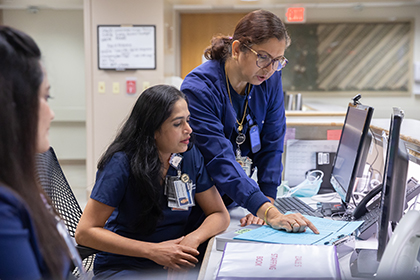LabArchives
What is an Electronic Lab Notebook?
An Electronic Lab Notebook (ELN) is a digital notebook and workspace designed for better data management, connectivity, collaboration, and sharing resources. The LabArchives Research ELN is free to all UTSW affiliates and can be accessed anywhere you have an internet connection. Everything that is entered into LabArchives is searchable, timestamped, and versioned, making it easy to keep track of all of your research data.
All files, images, attachments, and other forms of data entered into the Notebooks are immediately backed up and protected in a secure cloud network. The ELN is also designed to meet the data management requirements of various funding agencies, including the National Institutes of Health (NIH).

Securely store and easily search all your lab’s data across file types. LabArchives allows you to create custom forms, calculators, tools, chemical sketches, or use dozens of premade widgets.

View your data anywhere with an internet connection and monitor activity via the Activity Feed. Team members can be granted individualized access levels.

Share selected data or your entire notebook with colleagues anywhere in the world. They will see only what you want them to see. With your permission, collaborators can make comments and add data to your notebook.

All data is automatically date and time stamped and stored on the LabArchives server. This preserves every version of every data entry and provides clear evidence of who completed the work and when.
Set Up Your Electronic Lab Notebook
All UT Southwestern researchers can use the LabArchives Electronic Lab Notebook service.
- To create an account or sign in, visit LabArchives.
- Select UT Southwestern from the drop-down list.
- Once you reach the sign-on page, fill in the requested credentials.
PI’s can create an ELN for each member of their lab and lab members may create a notebook independently and share with their PI. To ensure data security and comply with institutional guidelines, all trainees should grant their PI ownership to their lab ELN within 48 hours.
